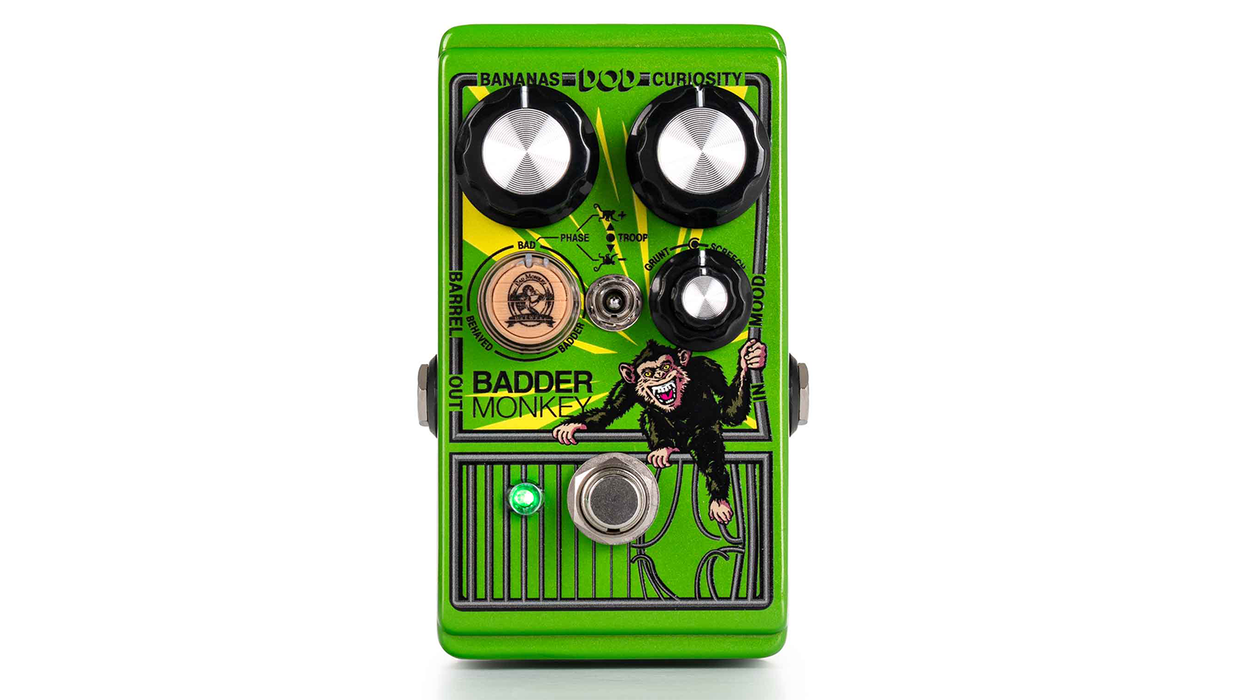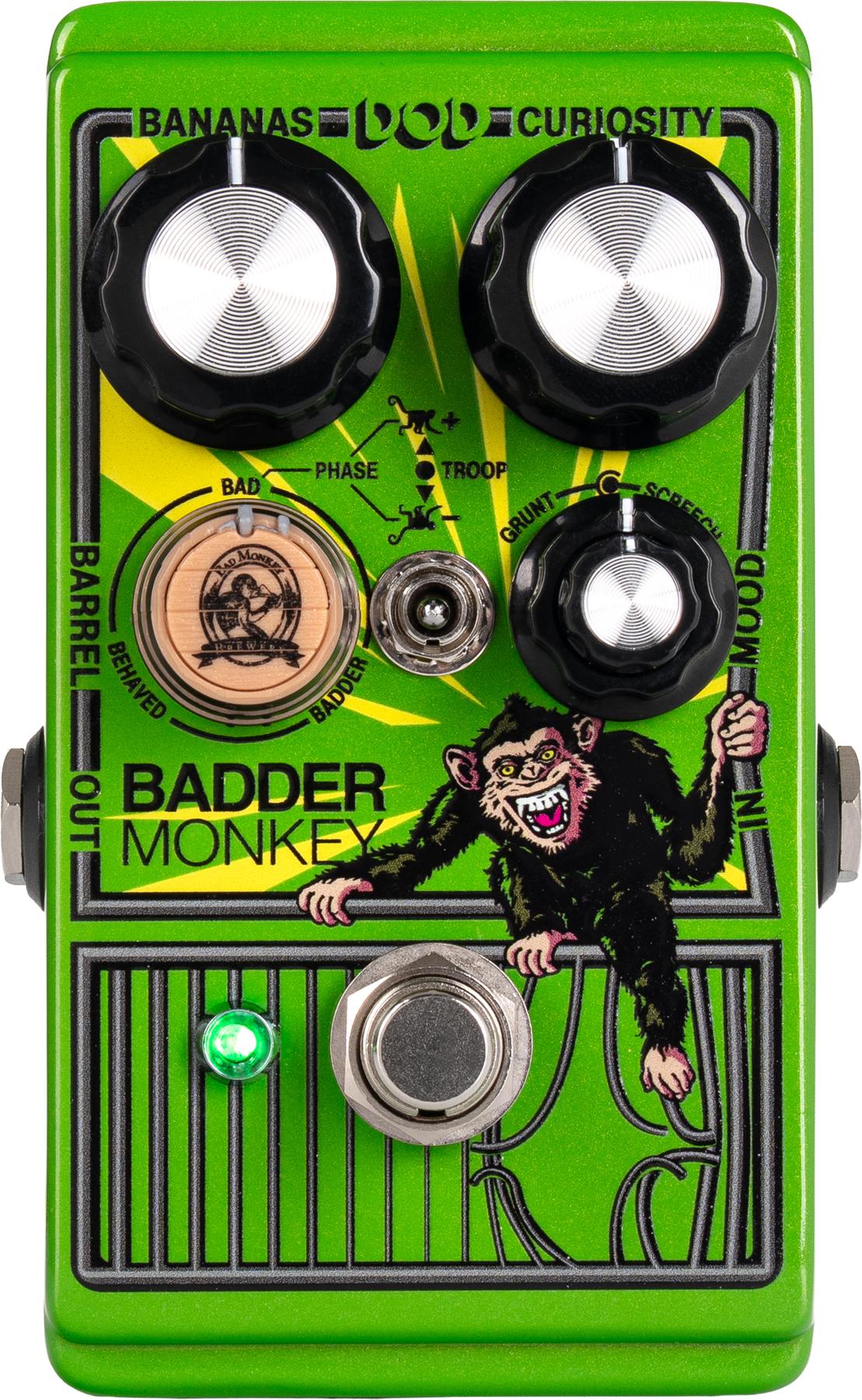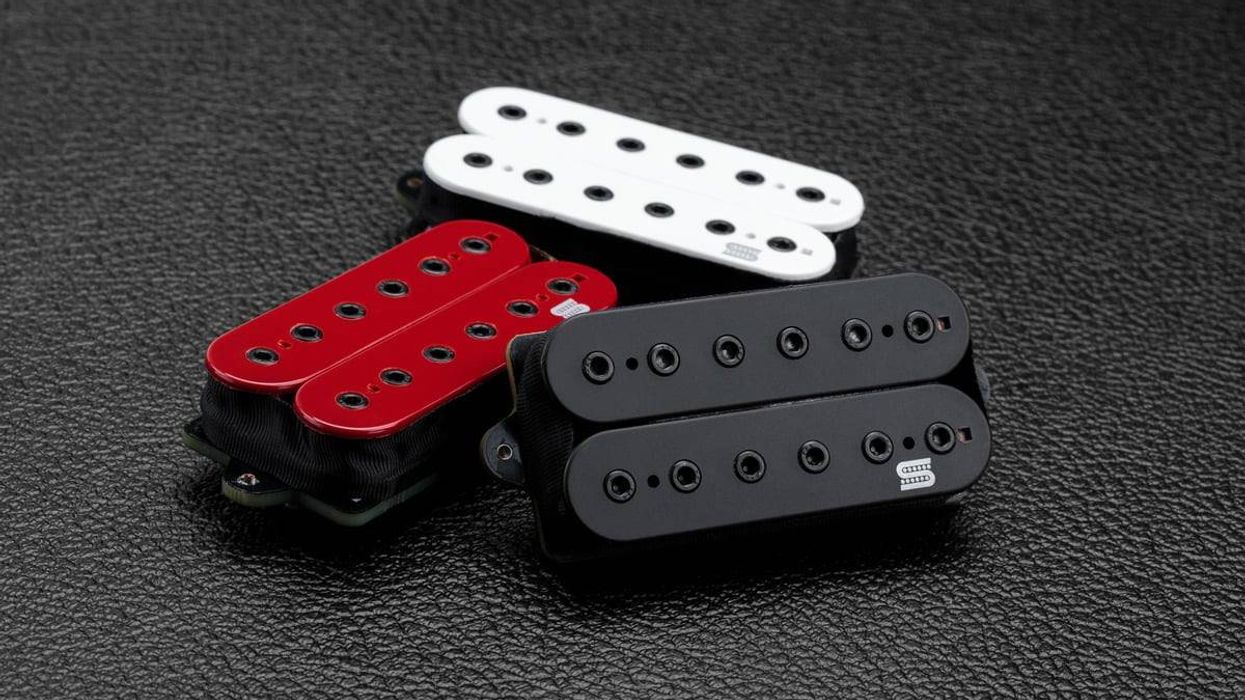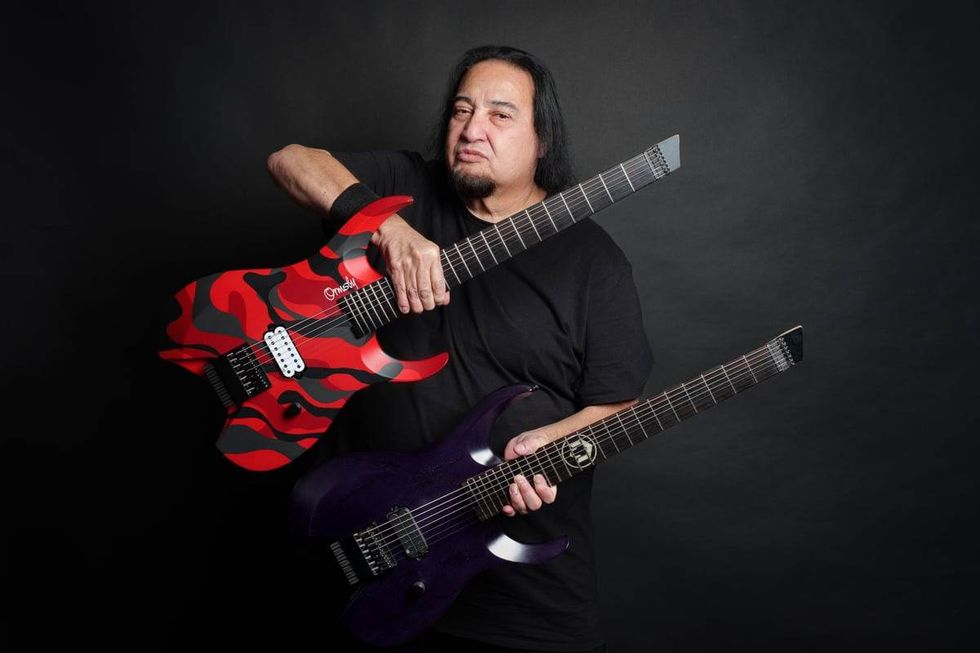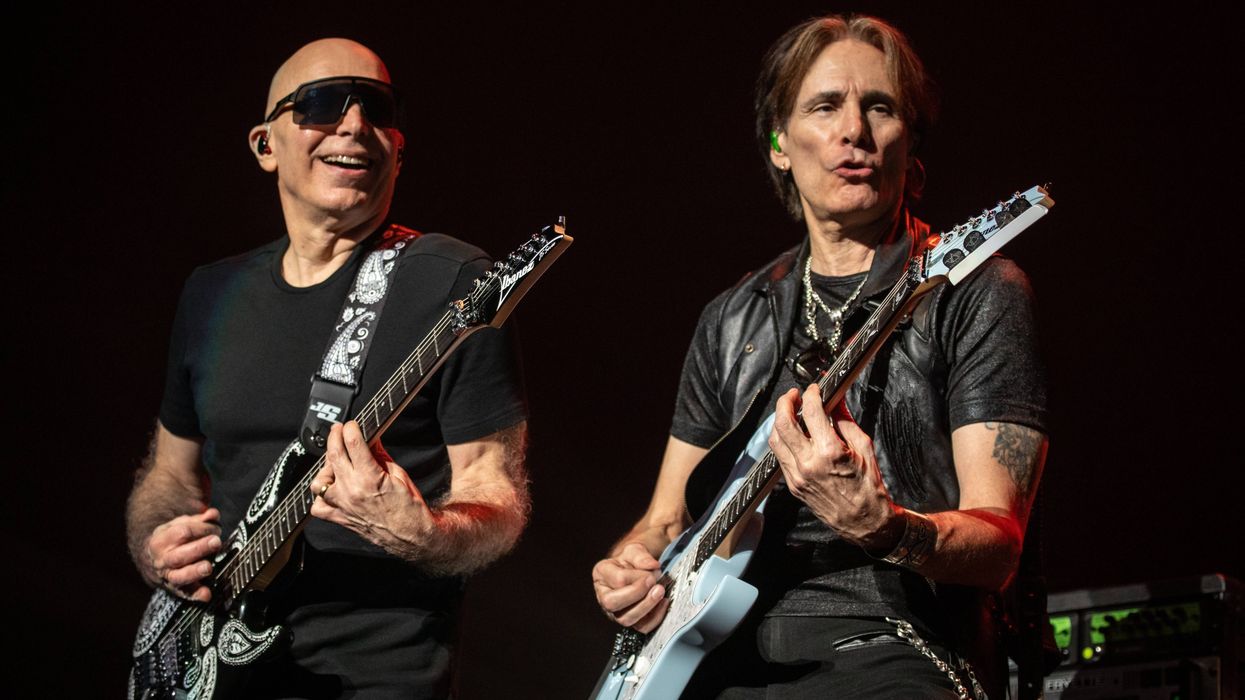There are guitar records, and then there are
guitar records, like AC/DC’s Back in Black.
Boasting worldwide sales of almost 50 million
units, Back in Black has inspired countless
fans with its raw, in-your-face attitude and
classic guitar licks.
Engineer Tony Platt manned the board for
that album, and along with legendary producer
Mutt Lange, helped capture the tones that
would launch a thousand guitar lessons. After
running into Platt at the famed Electric Lady
Studios in New York City, and sharing some
equally famous New York pizza afterwards, I
caught up with him from his home in England
to talk about this memorable project.
Did the band track the songs live?
Yes, absolutely. On Highway To Hell, there
were quite a few guitars overdubbed. But
with this record, there was an intention to do
it as live as possible. So all the songs were
tracked with Angus [Young, lead guitar],
Malcolm [Young, rhythm guitar], bass, and
drums. On a few occasions we may have
dropped in a chord or so on a great take.
What mics did you use on the guitars?
They were Neumann U 67s and U 87s. That’s
the point I start from with guitars. We used
two per guitar and mostly used one cabinet
for each amp. They would be on different
speakers, which lets you spread the image
and get more depth.
So how did you pan them?
Changing the panning could quite dramatically
change the focus of the mix. One of the mics—
it could be either one—would be hard left or
right, and the other might be just slightly left
or right of center, but sometimes would be the
opposite side of the other. So the guitar on the
left would be at 7 and 1 o’clock and the other
would be at 5 and 11 o’clock.
All Marshall amps?
Yes, and I did a lot of research into what makes
those sound like they do. The best combination
for me was some of the older 50- and 100-watt
heads with the simplest tone controls.
More important were the cabinets, and I feel
the sloped ones sound different from the
straight ones. The sloped ones are more for
cosmetics, are a little tighter, but you don’t
get the same bass response because they
are smaller. I also noticed that the 50-watt
speakers with a 100-watt head changed the
cabinet rating, and you weren’t crunching as
much as with the 35-watt speakers.
The guitar is very much a part of the whole
package. You turn an amp up until the guitar
starts to sing. That will, of course, be different
for every guitar you use, but that’s what we did.
We had a nice selection of heads and speakers
and we mixed and matched from song to song.
Most of it was done at Compass Point studios?
Yes, only some solo overdubs at Electric Lady.
At Compass Point, we would do the basics and
get some vocals on. Then Angus would do his
solo, and that was a completely different setup.
We ran his rig wireless, so I had different
setups in different rooms. There was a liveish
room down at the end of the studio and
another setup in the main room. We just kind
of blended the sound together in different
combinations. He always felt more natural
using a wireless, but in New York we didn’t
have the wireless setup, so we had to try to
match a few sounds.
The wireless has filtering in it, and it added quite
an edge in the middle area. We had to tweak
it a little to try and match, but I was always
aware that it wasn’t quite the same sound.
How about any effects?
No, the guys never liked using too much
reverb, echo, or effects of any description, so
I tried to use ambiance as much as possible
to lift the sound.
There’s a tiny bit of delay in the mix, which we
used to spread the guitars even further. It’s very
hidden and way in the background. Sometimes
it just helped to increase the distance between
the two mics. Angus and Malcolm basically play
in unison, just in different positions. It sounds
like one very big guitar, really.
I know it’s kind of a cliché, but what they do
is as good as it can get. What I needed to
do was just make sure I captured what they
do. That was the most important part of the
whole process, as far as I was concerned.
How about recording that famous bell on
“Hells Bells?”
I flew from Nassau back to the UK with
the intention of recording a bell from the
people making the one that was going out
on the tour. There was one in a bell tower,
and it was one ton in weight. So we took
the Rolling Stones Mobile [studio] to this
bell tower, set up the mics and struck it. But
when we did, the birds living there all took
off. By the time it stopped, they’d all come
back! So I abandoned that session.
But I went to the bell foundry with Ronnie
Lane’s Mobile, in an Airstream Caravan, and
backed it in. The bell was out of the cast,
and the tuning was within a few cents of
being spot on. The guy that made the bell
hit it, and we captured it on a multitrack.
We mixed the best mics onto 1/4" tape, and
Mutt, who had a background in editing, and
I dropped them in there one by one.
Looking back, what are your thoughts on
Back in Black?
I’m proud of that record. I consider myself
fortunate to record something that good, and
it’s a combination of so many circumstances.
Whenever I hear it, there’s a tinge of pride.
When you’ve had the opportunity to do something
right, and you have, it stays with you.
Rich Tozzoli
Rich Tozzoli is a Grammy-nominated engineer and mixer who has worked with artists ranging from Al DiMeola to David Bowie. A life-long guitarist, he’s also the author of Pro Tools Surround Sound Mixing and composes for the likes of Fox NFL, Discovery Channel, Nickelodeon, and HBO.







![Rig Rundown: Russian Circles’ Mike Sullivan [2025]](https://www.premierguitar.com/media-library/youtube.jpg?id=62303631&width=1245&height=700&quality=70&coordinates=0%2C0%2C0%2C0)













